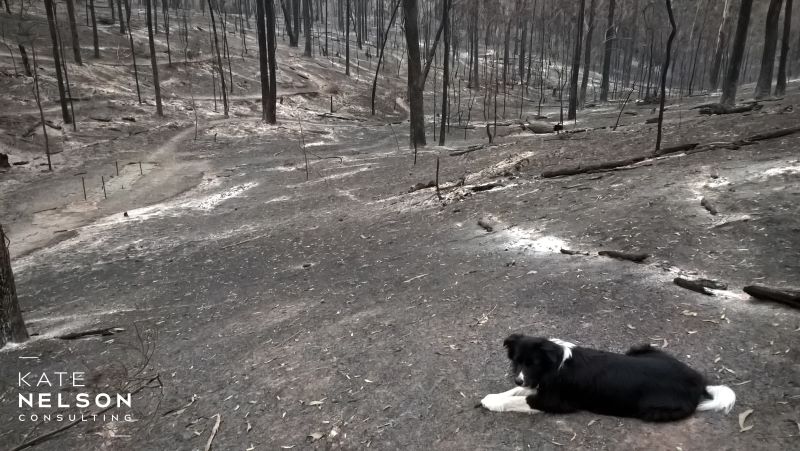We knew that our fire system worked but the question was always would it work in a fire event? While we had hoped never to have to activate our fire plan and system, the reality is that we have now well and truly put all that we had planned for and implemented to the test.
We have also learnt from our experience and thought it was worth reflecting on the things that worked well, the things we would do differently and the things that were unexpected as well.
As the climate changes and fire seasons become longer and more intense it will be important to continue to evolve and adapt our place if we are going to continue to live here and enjoy the environment that we love.
The Aftermath
The reality is that when you design a fire system to protect your place, your focus is on the actual fire event and perhaps not what happens afterwards.
The experience of the fire impacting our property was an intense period of around an hour.
After that was an equally intense four hours watching the fire, blacking out trees and other areas that continued to burn and making sure that things were under control.
The Burning Bush from Nelse on Vimeo.
Once things calmed down a bit, we sat on the deck and watched the bush continue to burn around us. The almost constant sound of burnt out trees collapsing was an amazing experience. While we were confident about the solid nature of the trees close to our house and buildings, any tree that had any sort of weakness, especially at the base, was particularly vulnerable.
Our trees are mostly large and tall, and the sound of trees collapsing went on for days afterwards. We lost a lot of trees to the fire, and afterwards.
What had happened around us?
We thought for sure that most places around us had been lost in the fire. We knew that our neighbours to the north, who also stayed to defend, were OK because we could hear them. Getting to them to really check was impossible because of the falling and fallen trees.
When it was safe to do so, Anthony went for a walk to see what had happened along our road. People did lose a lot, some people on the road lost everything, but most places were miraculously still essentially intact. This came as an amazing relief!
Even Mr Moo, the “giant” cow that lives in our street was safe and sound!
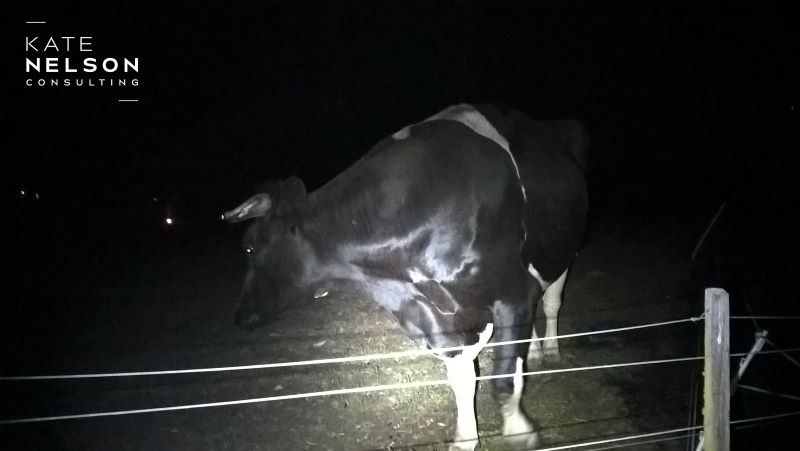
Mr Moo after the fire
It was a very long night
Eventually we decided that we needed to get at least a little bit of sleep so at around 4.00am we set up some sleeping arrangements on the deck. With the power and water off and the house all shuttered up – outside was the best option – and you could keep an eye on things.
We wondered what we would wake up to.
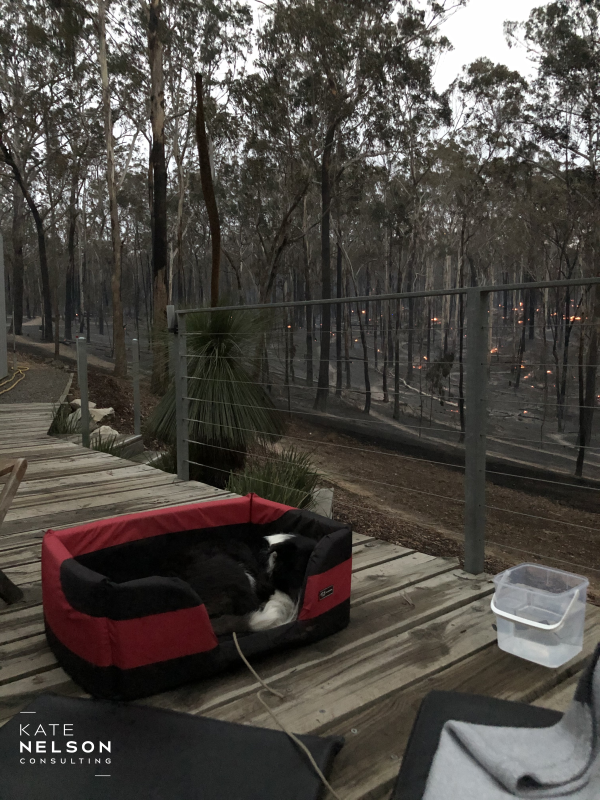
The view from the Deck on the morning of the last day of 2019
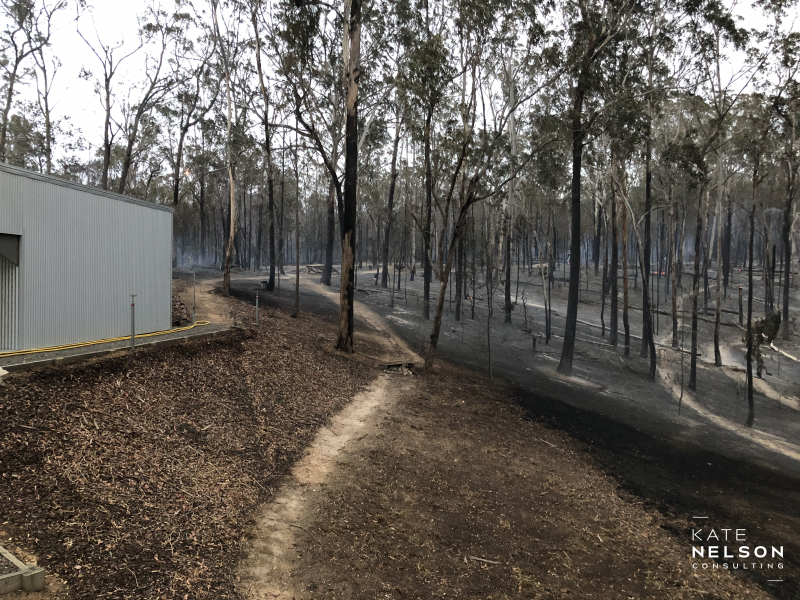
The morning after shows the clear line between burnt and unburnt ground and the effectiveness of the fire system
The trees look like they are still OK in these photos with the leaves intact – but they aren’t – the leaves have all been killed by the radiant heat and are now covering the ground as the trees regenerate. Beyond the area that we protected around the house, everything has been burnt – it’s just ash and charcoal, burnt trees and exposed earth.
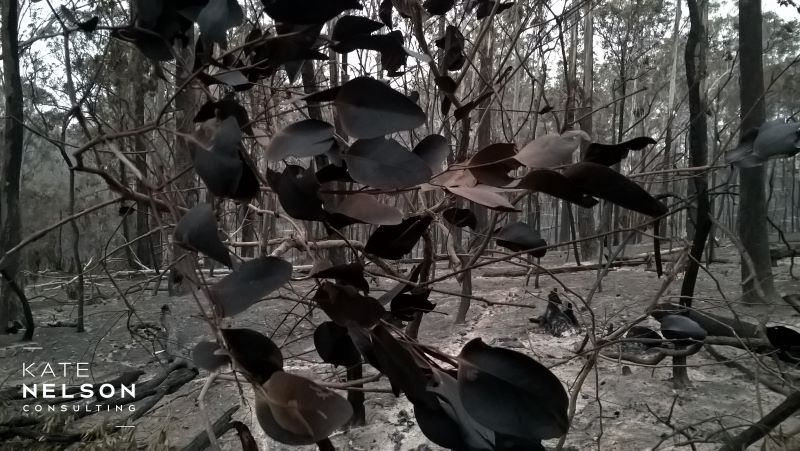
Eucalypt Leaves frozen in time by the fire
Dead leaves falling from the trees and creating a new layer of leaf litter
What did we learn?
- Having time to really get ready is gold but there is always more that you can do – you can never be totally prepared!
- Investing in a really powerful leaf blower is recommended if you are dealing with any sort of leaf litter build up in a bush environment. We used ours to create bare earth breaks around the buildings and other infrastructure and used it around trees as well. We would recommend maintaining a low level of leaf litter and blowing around you place on a regular basis so that you don’t have to move too much at once and risk creating a significant build up that will generate a lot of small embers.
- Understanding what starts fires. People often worry about seeing burnt material as a fire advances towards them. Our experience was that burnt material that has been extinguished on its way to you won’t start a fire. Small flying embers may allow easily combustible material to ignite. Large pieces of bark that are still on fire will start spot fires.
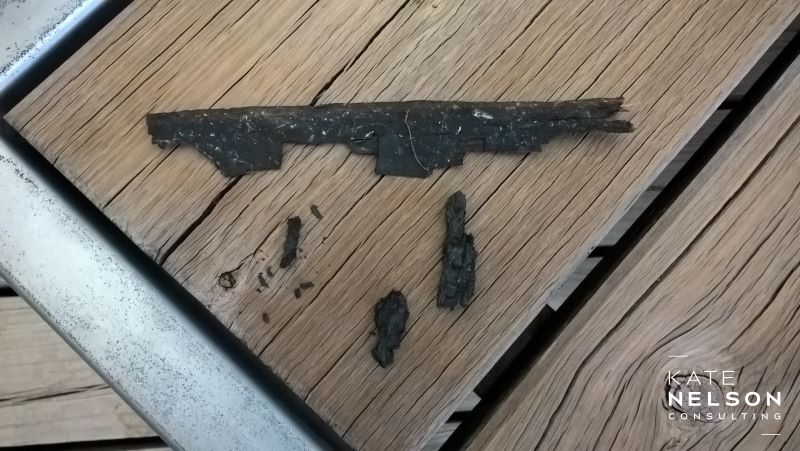
- When the bush is burning, it generates a lot of embers and so ember proofing your house and checking for embers is critical both during and after the fire has occurred.
- Good solar lights are really valuable. The fire we experienced was at night and there was no power. The lights you see in the video footage we took was provided by good quality solar lighting. Some of the lights are portable and can be carried around like a torch if needed.
- Make sure you have a head lamp. Hands free light is critical.
Being prepared for the unexpected scenario
Our focus has always been fire approaching to the north of us and that was where the fires were coming from through the day. Our system is set up to deal with that as the primary scenario. We had planned for the potential of a crown fire, but in many ways we are thankful that we were dealing with spot fires coming together from all directions.
In the case of this fire, we were essentially surrounded with spot fires to the east, north west and south of the property. The fire south of our property was unexpected and certainly got our attention early in the process on our property.
Evacuation was not an option at that time but setting up our portable impact sprinkler on that side of the property to enhance the system was. Being able to respond to impacts that may not have been obvious is important. You need to have some responsiveness built into your system. Fire is unpredictable and unexpected things can happen, no matter how good your planning is.
Thinking about what might happen afterwards
While we understood there would be some disruption, we probably hadn’t focussed on what it might be like after the fire.
We found ourselves with out power for two weeks, without water for a while and with limited phone and internet coverage at times. Camping at your place, even with a generator and camp stove, can only work for a limited period. You need to have an alternative plan – and friends that understand the need for good coffee!
Access into and out of the burnt area was also restricted and we did get caught trying to get back one day early in the process with traffic management points just getting up and operating. Having to carry identification to demonstrate you are a local landowner felt very strange in Australia.
And since when does it feel good to have the Army in your street?
We found ourselves reflecting on that one day, and while the Defence Forces and Army Reserve have done a great job assisting our community to recover, this isn’t exactly the “War on Climate” that we were contemplating as necessary!
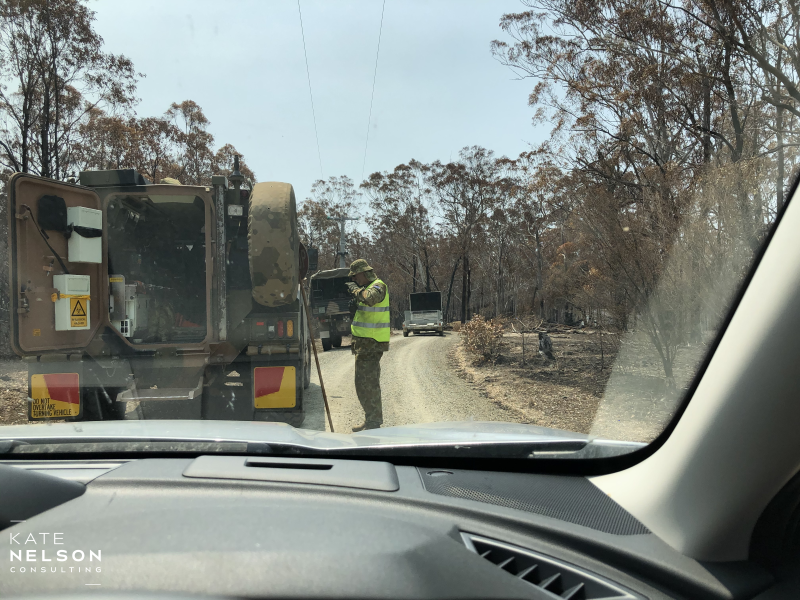
Learning from the Experience
Our fire experience was quite amazing, and it has helped us to gain some important insights that will allow us to continue to adapt our system and approach to being able to live safely in East Gippsland. There is a lot more to this than just having a resilient home. We hope that what we have learnt will be useful to others too.
Our backyard burning
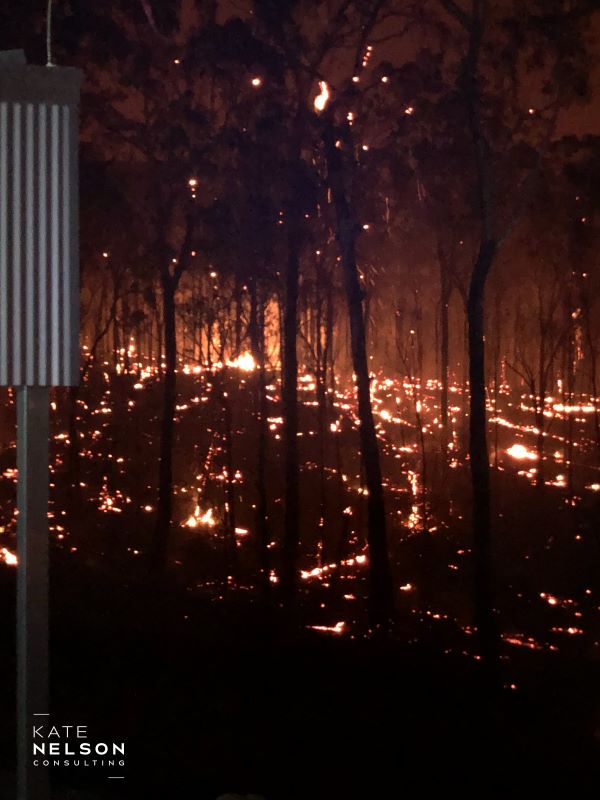
Future Fire Blogs will focus on
- Living in a changed community; and
- Living in a changing environment

